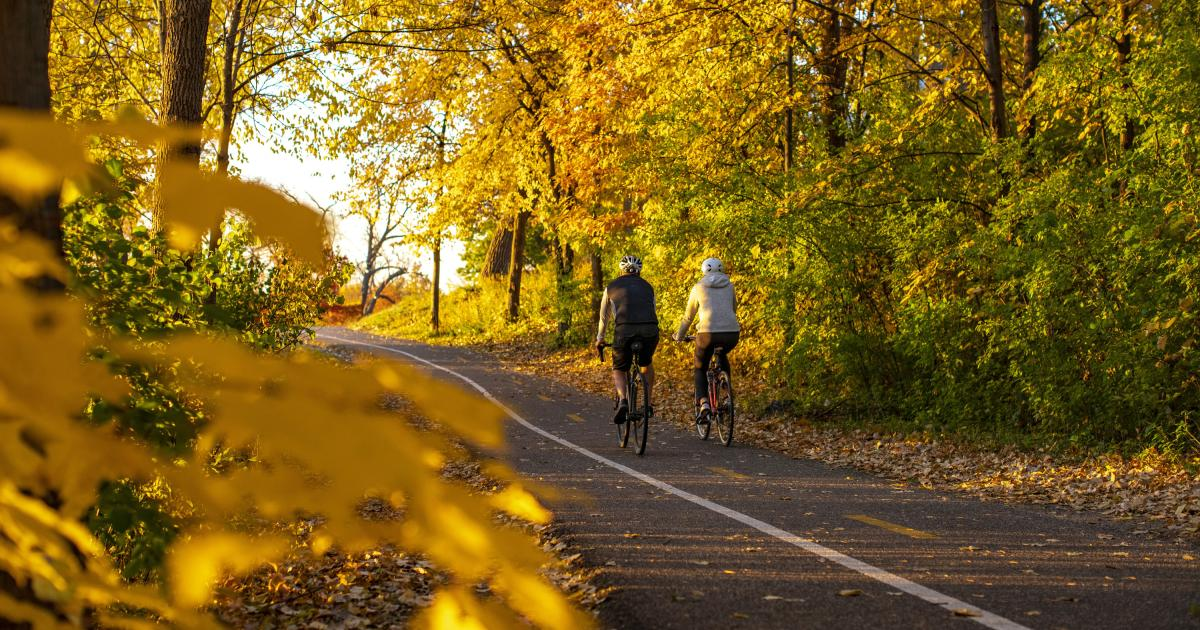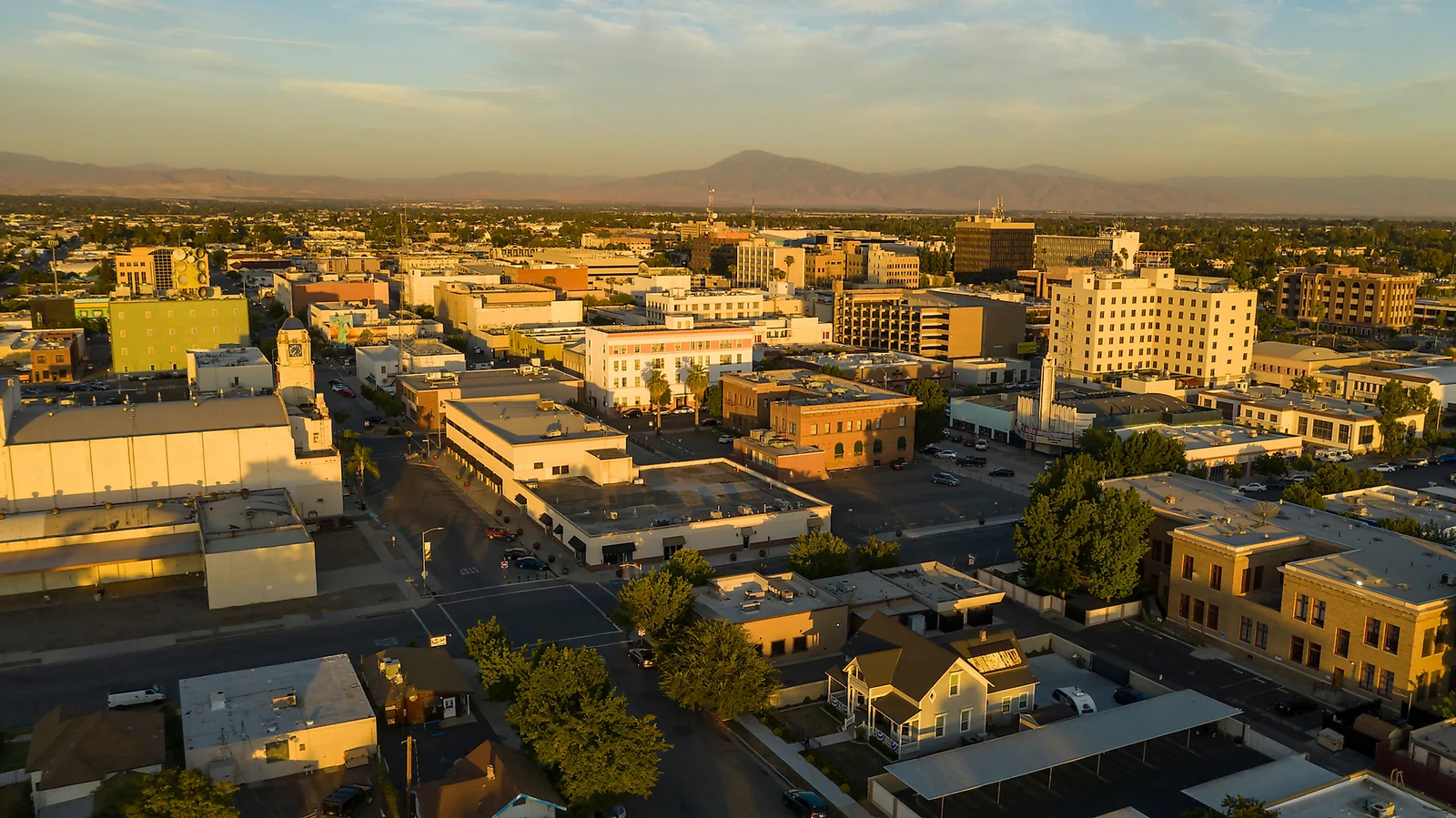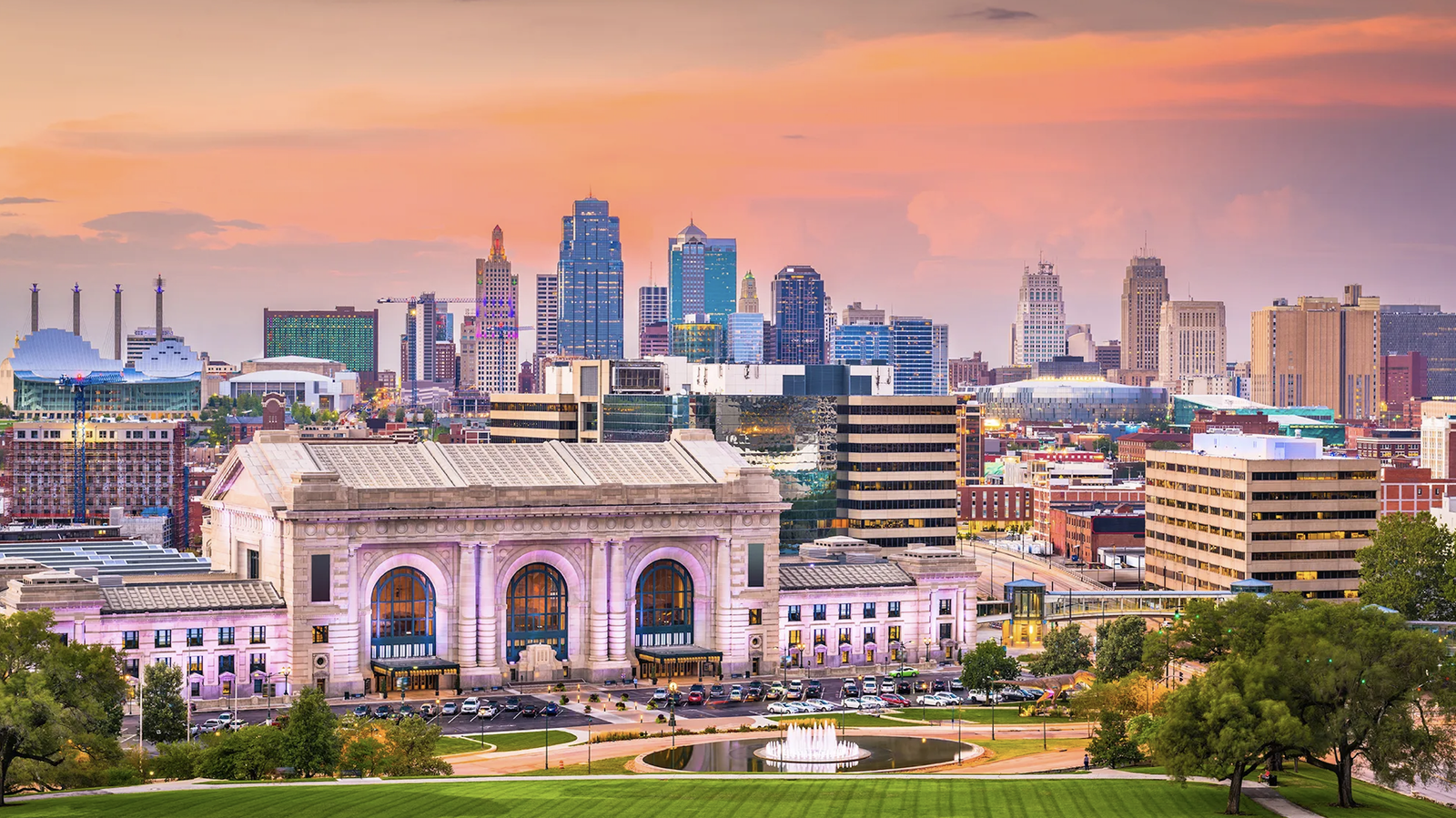Minneapolis shines as one of America’s greenest cities with pristine lakes, riverfront trails, and sprawling urban parks woven throughout neighborhoods. Getting outside remains a favorite pastime for locals who make use of the extensive park system spread across the metro area.
| Park Name | Description |
|---|---|
| Minnehaha Regional Park | Features a 53-foot waterfall, trails, sea caves, and an off-leash dog area. |
| Chain of Lakes | Offers waterside activities, scenic parkways, and trails for cycling around lakes like Lake Calhoun and Lake Harriet. |
| Theodore Wirth Park | The largest park with diverse ecosystems, hiking trails, golf course, and the Eloise Butler Wildflower Garden. |
| Bryant Lake Park | Known for its disc golf course, family-friendly activities, and concerts at the bandshell. |
| Mill Ruins Park | Combines historic milling ruins with waterfront trails and parkland near Saint Anthony Falls. |
| Lake Harriet | Popular for lake views, kayaking, and free music/movies at the bandshell. |
| Peace Garden | A downtown sanctuary honoring victims of gun violence, featuring a water feature and meditation spaces. |
| Walker Art Center Sculpture Garden | Displays contemporary sculptures in an urban garden setting, including the iconic Spoonbridge and Cherry. |
| Eloise Butler Wildflower Garden | Showcases over 500 native plant species within Theodore Wirth Park. |
| Minneapolis Grand Rounds Scenic Byway | A 50-mile loop around the city with scenic views, connecting parks and neighborhoods. |
| Mississippi Riverfront Trails | Offers biking and walking trails along over 5 miles of the river’s shoreline, featuring historic and scenic spots. |
Whether seeking active waterside adventures or quiet green spaces, Minneapolis parks offer outdoor escapes for all interests. Discover top parks in Minneapolis perfect for picnics, scenic strolls, sports games, or just plain relaxing in nature.
Escape to the Minnehaha Regional Park Waterfall

Name and Location: Minnehaha Regional Park is located in Minneapolis and is known for its stunning waterfall, Minnehaha Falls.
History and Significance: The park has been a beloved destination for over a century, with the falls drawing visitors for their scenic beauty and literary references in Longfellow’s poem “The Song of Hiawatha.”
What to Expect: Visitors can admire the majestic Minnehaha Falls, hike through wooded trails, and enjoy picnics amidst the natural splendor.
Visitor Information: Open year-round, and it’s a wonderful place for nature enthusiasts and families.
Minnehaha Regional Park brings beautiful natural scenery just minutes from downtown. The park centers around the gorgeous 53-foot Minnehaha Falls that cascades over limestone cliffs surrounded by lush parkland. Follow walking trails along Minnehaha Creek down to overlooks of the Mississippi River then continue wandering through mysterious sea caves carved into the rocky bluffs. Climb stairs to the top of the cliffs and take in panoramic views across the sweeping river valley. Have a picnic beside the falls, go for a paddleboat ride, or let dogs run free in the dedicated off-leash area.
Bike Along the Chain of Lakes

Name and Location: The Chain of Lakes refers to a series of interconnected lakes in Minneapolis, including Lake Calhoun, Lake Harriet, and Lake of the Isles.
History and Significance: These lakes have long been a recreational hub, offering opportunities for biking, water activities, and scenic beauty.
What to Expect: Visitors can bike along well-maintained trails that circle the lakes, taking in beautiful views and stopping for picnics or beachside relaxation.
Visitor Information: Open year-round, with bike rentals available, making it a great spot for outdoor enthusiasts.
One crown jewel of Minneapolis resides in the magnificent Chain of Lakes parks running through Uptown and Southwest Minneapolis. Stunning Lake Calhoun, Lake Harriet, Lake of the Isles, Cedar Lake and Brownie Lake each offer their own waterside activities connected by scenic parkways and trails perfect for cycling. At Lake Harriet bandshell, hear free concerts in summer then rent kayaks to paddle the lake yourself. Lake Calhoun draws stand up paddleboarders, sailors, and swimmers to its refeshing waters. Hop between lakes however you prefer – strolling, rollerblading, or pedaling past downtown skyline views.
Escape to Theodore Wirth Park

Name and Location: Theodore Wirth Park is a large urban park located in Minneapolis, known for its natural beauty and recreational activities.
History and Significance: The park is named after Theodore Wirth, a prominent parks superintendent, and it has been a cherished green space for generations.
What to Expect: Visitors can hike through wooded trails, go cross-country skiing in winter, and enjoy picnics in a serene natural setting.
Visitor Information: Open year-round, with various seasonal activities and events.
The giant 759-acre Theodore Wirth Park marks the Twin Cities largest park offering year-round recreation. Surrounded by forests and meadows, the sprawling park contains birch and evergreen groves, winding creeks, and the peaceful Lake Hiawatha. Lace up hiking boots to walk extensive wilderness trails leading to secluded spots ideal for birdwatching. Wirth Park also maintains an 18-hole golf course open spring through fall plus vast trail networks for snowshoeing come winter. The Eloise Butler Wildflower Garden displays over 500 native plant species when in bloom from April to October.
Play Disc Golf at Bryant Lake Park

Name and Location: Bryant Lake Park is located in Eden Prairie, near Minneapolis, and offers a disc golf course amidst scenic surroundings.
History and Significance: The park provides a picturesque setting for disc golf enthusiasts and outdoor lovers, with a challenging course.
What to Expect: Visitors can play a round of disc golf, take in the natural beauty, and enjoy picnics in the park’s peaceful atmosphere.
Visitor Information: Open seasonally, with disc golf equipment available for rent.
In Southwest Minneapolis, Bryant Lake Park offers families space to play, walk dogs, have picnics, and enjoy concerts at the bandshell. But the top attraction remains one of the area’s best disc golf courses winding through open fields encircling Lake Harriet. The 18-hole course mixes long throws over water with tricky shorter attempts around trees and foot bridges. Play a full round or just practice aim at the on-site disc golf training facility. All ages and skills levels enjoy this classic Minnesota pastime at beautiful Bryant Lake Park.
Stroll Along the River at Mill Ruins Park

Name and Location: Mill Ruins Park is located in downtown Minneapolis, near the Mississippi River, and offers a glimpse into the city’s industrial history.
History and Significance: The park features ruins of historic flour mills, showcasing the city’s milling heritage, and is part of the St. Anthony Falls Historic District.
What to Expect: Visitors can take leisurely strolls along the river, learn about the milling history, and enjoy scenic views of the falls.
Visitor Information: Open year-round, and it’s a unique blend of history and natural beauty.
One of Minneapolis’ newest downtown green spaces, Mill Ruins Park transformed old flour milling ruins into serene waterfront walking trails and parkland. Located beside Saint Anthony Falls, wander paved pathways around the Stone Arch Bridge, under bobbing footbridges, and view remnants of the city’s lumber and milling heritage. Snap photos in front of weathered brick buildings and hidden waterfalls rushing over the old dam structures. Interpretive signs detail the area’s history while ducks and geese now swim where lumber once floated down the canal.
Play Lakeside at Lake Harriet

Name and Location: Lake Harriet is one of the Chain of Lakes in Minneapolis, known for its family-friendly atmosphere and recreational opportunities.
History and Significance: The lake has been a popular destination for swimming, sailing, and outdoor concerts, providing a sense of community for residents.
What to Expect: Visitors can swim at the beach, rent paddleboats, attend concerts at the bandshell, and enjoy lakeside picnics.
Visitor Information: Open seasonally, with various activities and events for families.
Locals flock to Lake Harriet to soak up the quintessential Minnesota lake views and small town vibes just minutes from the city. Rent kayaks, canoes or paddle boats from the Dock to ply Lake Harriet’s peaceful waters surrounded by lush parkland. Let kids safely play in the wading pool and water playground during hot summers. Join volleyball games on the sandy beach or take the dogs to the expansive off-leash area. Don’t miss free music and movies at the historic Lake Harriet Bandshell hosting events all summer long.
Relax at the Peace Garden

Name and Location: The Peace Garden is located within Lyndale Park Gardens in Minneapolis and offers a tranquil and contemplative space.
History and Significance: Established as a symbol of peace and reconciliation, it features a Japanese rock garden and a peace lantern.
What to Expect: Visitors can relax in a serene setting, meditate, and appreciate the beauty of Japanese-inspired garden elements.
Visitor Information: Open seasonally, and it’s a place for quiet reflection.
In the heart of downtown, the Peace Garden was created to honor victims of local gun violence and symbolize hope. This serene pocket park features Adirondack chairs facing a calm water feature, wooden footbridge, and vibrant flowers. From the outside peace bell to the inspirational quotes carved into walls, everything about the space encourages quiet meditation. Visitors sit beside trickling waterfalls, listen to chiming bells, and soak in a little tranquility blocks from the busy city center. The Peace Garden remains open daily, offering a patch of nature perfect for pulling aside when craving a mindful moment.
Play at the Walker Art Center Sculpture Garden

Name and Location: The Walker Art Center Sculpture Garden is located adjacent to the Walker Art Center and showcases a diverse collection of outdoor sculptures.
History and Significance: Established in 1988, it is known for its iconic Spoonbridge and Cherry sculpture and offers a unique blend of art and nature.
What to Expect: Visitors can explore contemporary sculptures, including the famous Spoonbridge and Cherry, in a beautiful garden setting.
Visitor Information: Open year-round, with no admission fee, making it accessible to art enthusiasts and the curious alike.
The iconic Spoonbridge and Cherry sculpture landmarks the entrance to this unique museum outdoor space with artworks integrated into the urban gardens. The Minneapolis Sculpture Garden displays 40+ pieces from contemporary greats like Robert Indiana, Sol LeWitt and Ellsworth Kelly set along walking paths or patches of green grass. Snap silly photos in the distorted mirrors of the Cherry on a Spoon sculpture then lounge beside the center fountain. Nearby baseball fields, a tennis court, and plenty of grassy areas give kids space to play outside between viewing artistic marble, metal and concrete sculptures.
Hike Through Eloise Butler Wildflower Garden

Name and Location: Eloise Butler Wildflower Garden is located within Theodore Wirth Park and is dedicated to native wildflowers.
History and Significance: Established in 1907, it is the first public wildflower garden in the United States, showcasing native plant species.
What to Expect: Visitors can hike along winding paths, observe native wildflowers, and learn about plant conservation efforts.
Visitor Information: Open seasonally, and it’s a haven for nature enthusiasts and botany enthusiasts.
On the northwest edge of Theodore Wirth Park, traverse trails winding through the cultivated Eloise Butler Wildflower Garden showcasing over 500 native plant species. Follow dirt footpaths under lush forest canopies coming upon new floral varieties around every bend from April to October during the growing season. Keep eyes peeled for trumpeter swans on the pond along with turtles and blue herons. This serene native habitat offers nature therapy within Minneapolis city limits.
Bike Minneapolis Grand Rounds Scenic Byway

Name and Location: The Minneapolis Grand Rounds Scenic Byway is a network of interconnected parkways and trails that encircle the city, offering scenic bike rides.
History and Significance: Established over a century ago, it showcases the city’s commitment to preserving natural beauty and providing recreational spaces.
What to Expect: Visitors can bike along the byway, enjoying picturesque views of lakes, parks, and the Mississippi River, making it a scenic adventure.
Visitor Information: Open year-round, and it’s perfect for outdoor enthusiasts and those seeking an active adventure.
The roughly 50 mile Grand Rounds Scenic Byway loops around the city clinging to parkland, lakes, and river frontage. Linking neighborhoods from Northeast through downtown out to Minnehaha Falls, the byway allows walkers, joggers, rollerbladers and bikers a dedicated, uninterrupted thoroughfare off streets. Pedal at whatever pace suits you while gazing at gorgeous urban scenery like Calhoun Lake, the Mississippi River, wooded creek beds, and even downtown skyscrapers. Feel free to tackle the entire scenic drive or simply enjoy segments connecting relaxing parks across Minneapolis.
Explore Mississippi Riverfront Trails

Name and Location: The Mississippi Riverfront Trails offer a network of walking and biking paths along the Mississippi River in Minneapolis.
History and Significance: These trails provide access to the scenic beauty of the river, connecting parks, neighborhoods, and historic sites along the way.
What to Expect: Visitors can walk, jog, or bike along the river, enjoying river views, bridges, and the dynamic urban landscape.
Visitor Information: Accessible year-round, and it’s a great way to experience the riverfront and explore the city’s history.
Minneapolis hugs over 5 miles of Mississippi River shoreline accessible via scenic biking and walking trails. Start downtown at the Stone Arch Bridge crossing to Main Street Southeast lined with cherry trees, historic buildings, and river overlook stops. Further north, paths meander through park spaces like Father Hennepin Bluffs Park with limestone cliffs towering above the water. To the south near Minnehaha Park, the expanding RiverLake Greenway eventually will connect the Minneapolis riverfront down through Saint Paul’s scenic spans.
Minneapolis earned its “City of Lakes” nickname thanks to the wealth of pristine aquatic parkland all within a short distance. But the metro green spaces expand far beyond the famed Chain of Lakes to waterfall hikes, garden sanctuaries, golf courses, trails through varied terrain, and miles of scenic pathways clinging to the mighty Mississippi. Use this guide to discover top parks in Minneapolis offering natural escapes across neighborhoods.





Join the Conversation